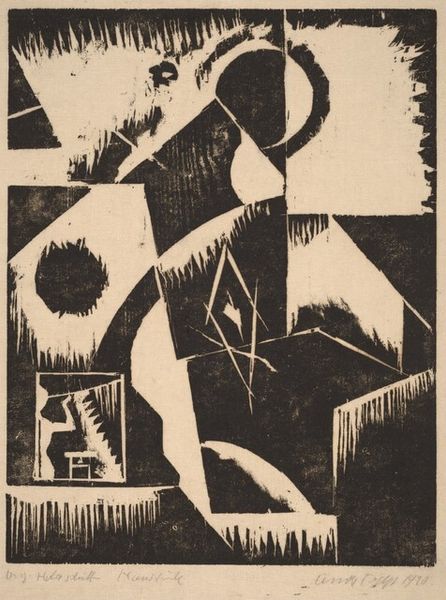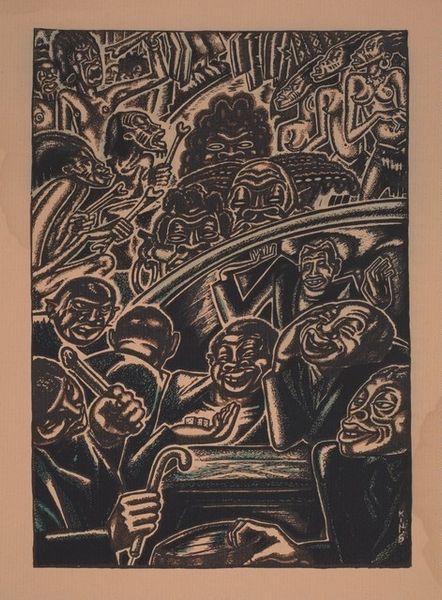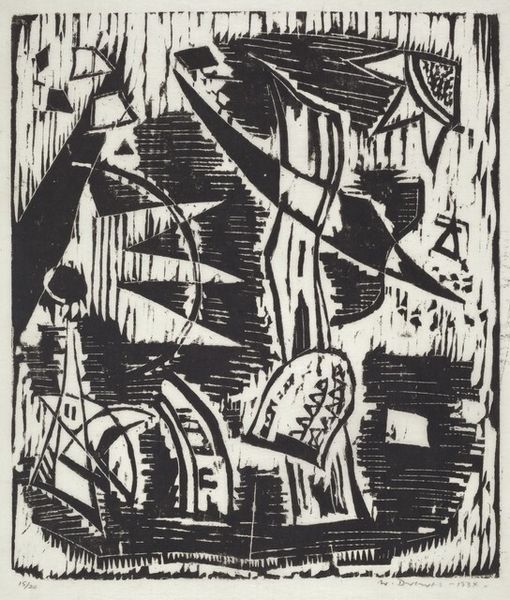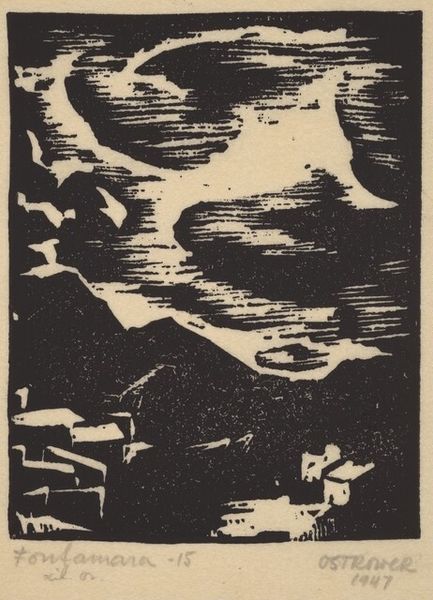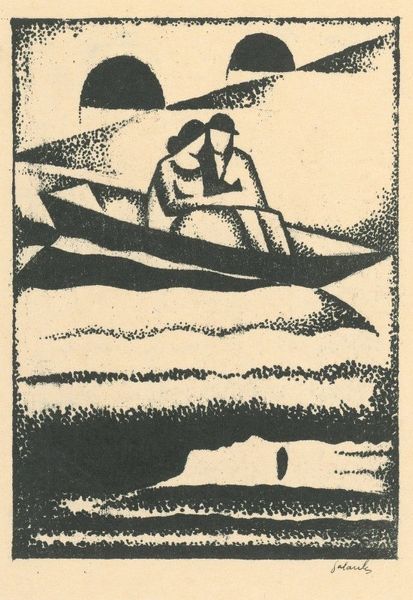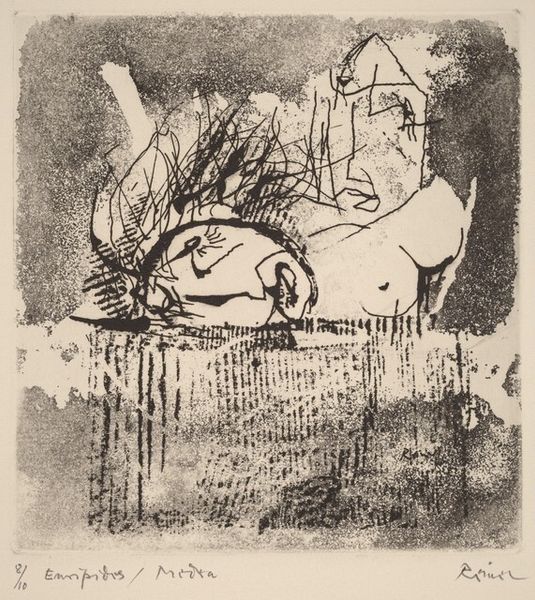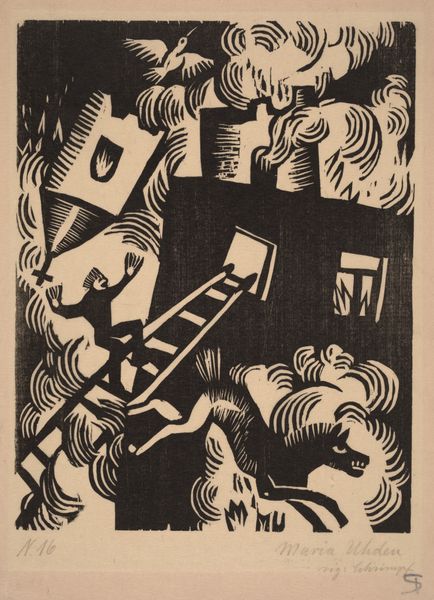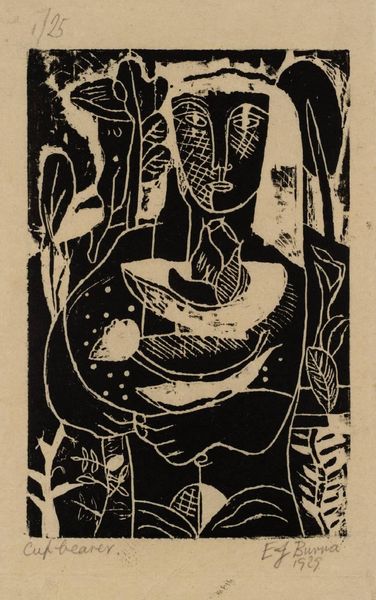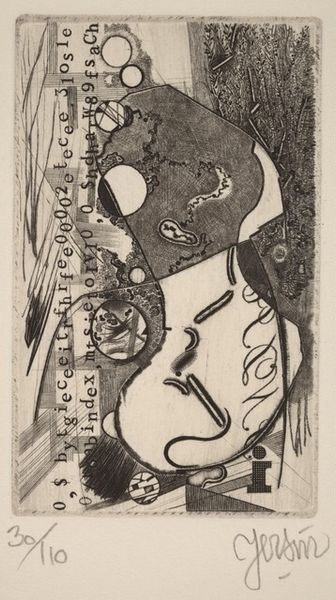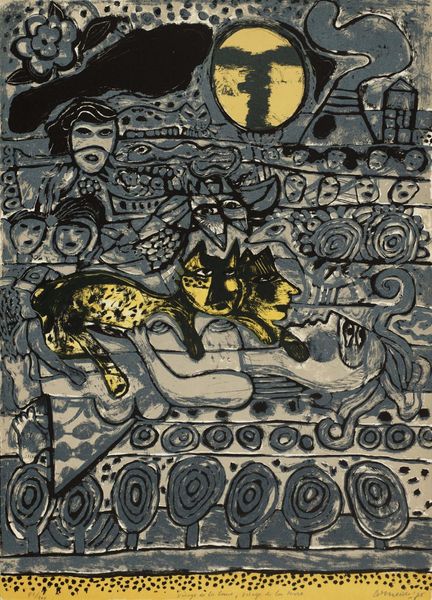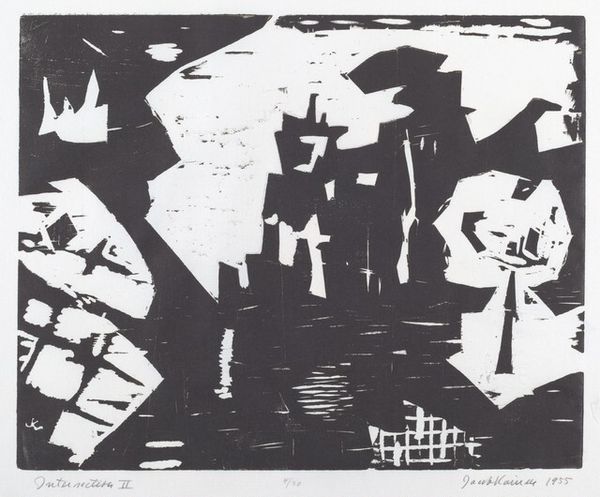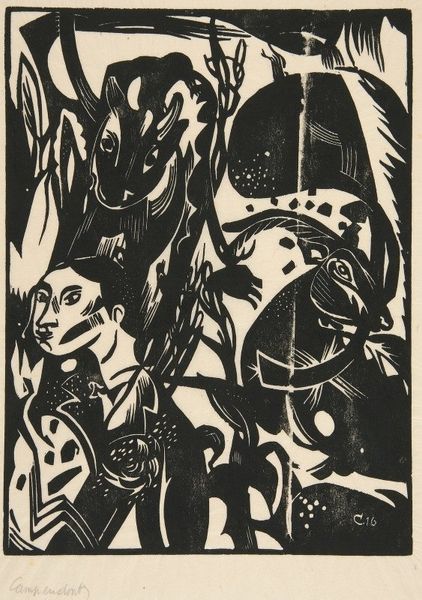
Dimensions: image: 27.2 x 17.5 cm (10 11/16 x 6 7/8 in.) sheet: 36.8 x 27 cm (14 1/2 x 10 5/8 in.)
Copyright: National Gallery of Art: CC0 1.0
Roy Lichtenstein made this woodcut titled "St. George and the Dragon (I)" in 1950. The image is alive with ideas about history, popular culture, and the role of the artist. Lichtenstein here presents a medieval subject with an American sensibility. The legend of St. George was often used to represent the triumph of good over evil and the power of the church. Lichtenstein reduces the scene to simplified forms, almost like a child’s drawing. The crude lines and contrasting colors are typical of early woodcut prints. The simplified forms and bold lines create a visually striking image, but how does the image affect the legend’s meaning? Lichtenstein was interested in exploring different styles and techniques. His early works, like this woodcut, show an artist experimenting and finding his voice. If we consider Lichtenstein’s later embrace of Pop Art and his commentary on consumer culture, we can see this work as a starting point for his artistic journey. Researching Lichtenstein’s early career and the art movements of the time can provide a deeper understanding of this unique woodcut.
Comments
No comments
Be the first to comment and join the conversation on the ultimate creative platform.
